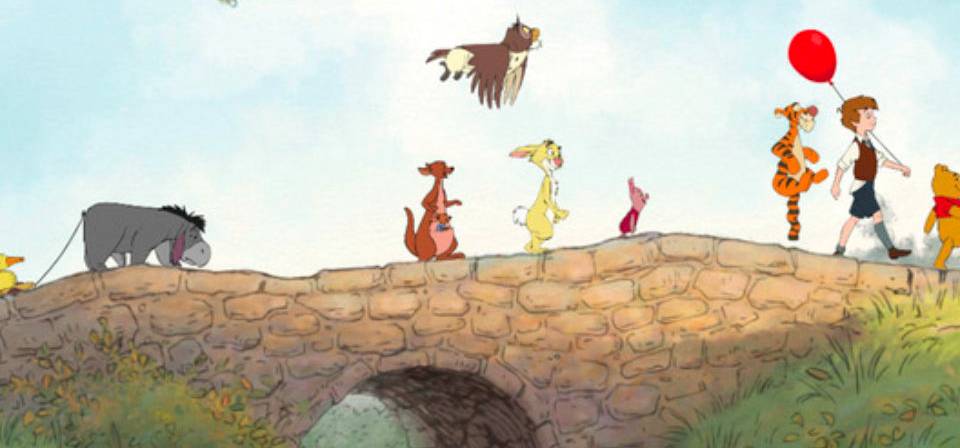The Many Adventures of Winnie the Pooh (1977)
What a peculiar genius was A. A. Milne, and what a delightful literary confection are his tales of Winnie-the-Pooh, very sweetly told a very long time ago to Pooh himself under the vigilant attention of Christopher Robin.
Caveat Spectator
Mildly unsettling Heffalumps and Woozles.In retelling these tales, the Disney animation house inevitably, yes, Disneyfied Milne’s creations, as it did everything it touched, from the dwarfs in Snow White to the satyr in Hercules.
Yet Pooh and friends, though visually cutened from Ernest H. Shepard’s classic illustrations, somehow emerge from the Disneyfication process more unmistakably themselves than any other literary characters in any other Disney cartoon, while Milne’s distinctive voice retains its quality in with a clarity and integrity exceeding that of any other author Disney adapted, from Collodi (Pinocchio) to Barrie (Peter Pan) to Hugo (The Hunchback of Notre Dame). (The only other author to get anything like similar treatment was Lewis Carroll in Alice in Wonderland.)
The result, though not perfect, is among the most charming and delightful films for even the youngest viewers. Actually an anthology of three featurettes based on Milne’s writings, The Many Adventures of Winnie the Pooh includes the well-known tales of the Honey Tree and the Blustery Day, among others. The voice work is spot-on, from Sterling Holloway’s warm, fuzzy cadences as Pooh and John Fiedler’s timorous little tones as Piglet to the rich narration of Sebastian Cabot (Bagheera in The Jungle Book). A timeless family classic.
Related

Winnie the Pooh (2011)
Disney’s new Winnie the Pooh is an unexpected gift, an unlikely return to a magical and gentle world that belongs so firmly to the past that I would have thought the journey all but impossible.
Recent
- Benoit Blanc goes to church: Mysteries and faith in Wake Up Dead Man
- Are there too many Jesus movies?
- Antidote to the digital revolution: Carlo Acutis: Roadmap to Reality
- “Not I, But God”: Interview with Carlo Acutis: Roadmap to Reality director Tim Moriarty
- Gunn’s Superman is silly and sincere, and that’s good. It could be smarter.
Home Video
Copyright © 2000– Steven D. Greydanus. All rights reserved.